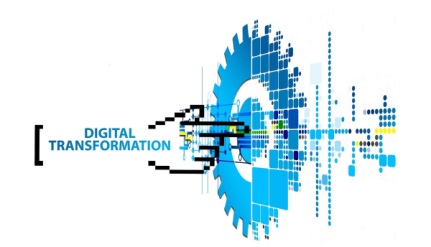
__________________________________________________________________________________________
On the transition to digital and ‘green’ economies, and the need for a more holistic view:
“To succeed in their dual transition, governments will not only need to spend more on R&D; they will also need to invest these funds strategically. This will entail taking the long-term view and aligning their economic, digital, environmental, industrial and agricultural policies, among others, to ensure that these are mutually reinforcing. To be coherent, reforms, policies and resources will all need to point in the same direction, towards the same strategic goal of sustainable development.” (UNESCO)
The UNESCO Science Report (2021) is available in Open Access under the Attribution-ShareAlike 3.0 IGO (CC- BY-SA 3.0 IGO) license. The UNESCO Science Report: the Race Against Time for Smarter Development is coordinated and published by UNESCO. Production of the report was supported by Fondation Ipsen.
__________________________________________________________________________
The UNESCO 2021 Science Report (excerpts)
AT A GLANCE:
- Development priorities have aligned over the past five years, with countries of all income levels prioritizing their transition to digital and ‘green’ economies.
- To accelerate this transition, governments are designing new policy tools to facilitate technology transfer to industry.
- Yet, eight out of ten countries still devote less than 1% of GDP to research; they remain largely recipients of foreign scientific expertise and technology.
- Although countries are investing more in green tech, sustainability science is not yet mainstream at the global level, according to a UNESCO study.
- All governments need to ensure that policies and resources for their dual transition point in the same direction across different economic sectors, towards the same strategic goal of sustainable development.
- The Covid-19 pandemic has energized knowledge production systems.
- Among innovation leaders, the evolving geopolitical landscape and pandemic have stirred debate on how to safeguard strategic interests in trade and technology.
___________________________________________________________
(1) The race against time for smarter development. Susan Schneegans, Jake Lewis and Tiffany Straza.
INTRODUCTION. Countries pairing their digital and green transition.
The world is engaged in a race against time to rethink development models by 2030, the deadline for reaching the United Nations’ 17 Sustainable Development Goals (SDGs). The UNESCO Science Report’s subtitle, ‘the race against time for smarter development’, captures this urgency.
Since 2015, most countries have aligned their national policies with The 2030 Agenda for Sustainable Development and are engaged in a gradual transition to ‘green’ economies. Governments are stepping up support for smarter production and consumption systems. As the cost–benefit ratio of renewable energy rises, ‘green’ energy projects have multiplied.
However, many governments still fret about how to reconcile the preservation of markets and jobs with their commitment to the Paris Agreement (2015). Despite the growing impact of climate change, there is still insufficient support on the part of both governments and businesses for the necessary energy transition: over 80% of global energy production was based on coal, oil and gas in 2018.
In parallel to their green transition, governments are digitalizing public services and payment systems to improve service delivery, support business and combat corruption and tax evasion. Policies are fostering the emergence of a digital economy, including smart manufacturing, smart finance (fintech), smart health care services like telemedicine and smart agriculture. The report’s subtitle is also an allusion to this form of ‘smarter development’ driven by digital technologies such as artificial intelligence (AI) and robotics, big data, the Internet of Things and blockchain technology which are converging with nanotechnology, biotechnology and cognitive sciences to form the bedrock of the Fourth Industrial Revolution (also known as Industry 4.0).
Countries of all income levels are engaged in this dual green and digital transition. Science has become synonymous with modernity and economic competitiveness, even with prestige. For those countries bearing the brunt of climate change, science offers hope of greater resilience to destructive storms, fires, droughts and other calamities.
However, businesses are not always supporting this agenda, either for lack of motivation or capacity; many continue to import packaged technologies, rather than develop their own. They are often reluctant to collaborate with public research institutions. Governments everywhere are devising new incentives to foster technology transfer, such as by setting up labs where businesses can ‘test before they invest’ in digital technologies.
For their dual transition to succeed, governments will need to raise their commitment to research and development (R&D). The G20 still accounts for nine-tenths of research expenditure, researchers, publications and patents (Figure 1.1). Although research expenditure rose in most regions between 2014 and 2018 (Figure 1.2), 80% of countries still invest less than 1% of GDP in R&D. In some cases, the researcher population has risen faster than related expenditure (Figure 1.3), leaving less funding available to each researcher.
To succeed in their dual transition, governments will not only need to spend more on R&D; they will also need to invest these funds strategically. This will entail taking the long-term view and aligning their economic, digital, environmental, industrial and agricultural policies, among others, to ensure that these are mutually reinforcing. To be coherent, reforms, policies and resources will all need to point in the same direction, towards the same strategic goal of sustainable development.
For developing countries, the dual green and digital transition is accelerating a process of industrialization that would normally take decades. For all countries, this transition is demanding an integrated approach to long-term planning and a heavy investment in infrastructure.
The rapid societal transformation under way offers exciting opportunities for social and economic experimentation that could make life much more comfortable. It also presents the risk of exacerbating social inequalities and, for countries implementing ambitious infrastructure projects, of debt vulnerability. The Covid-19 pandemic has accentuated both of these risk factors. [ … ]

_____________________________________________________________________________________________________




